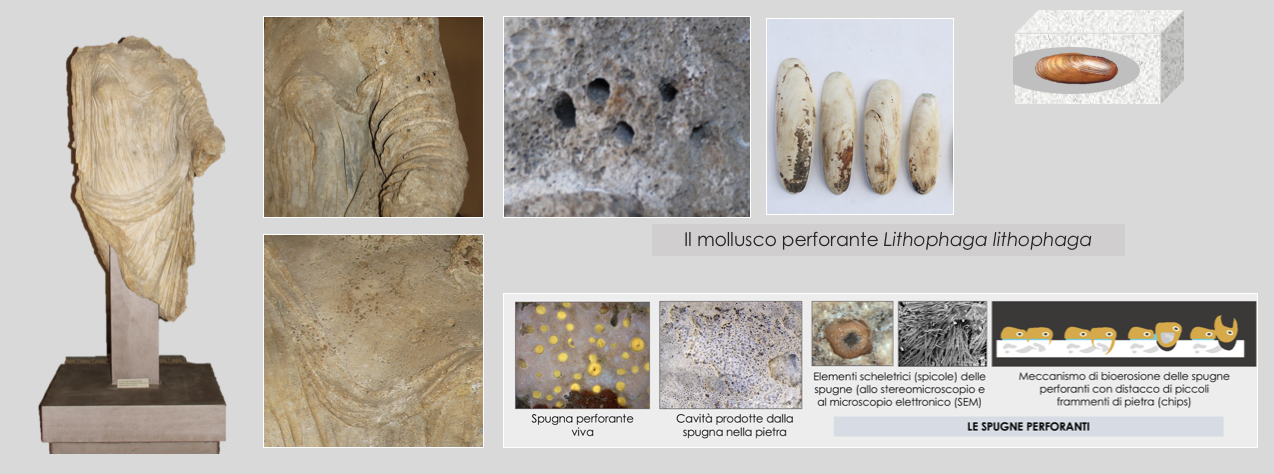A Pentelic marble, Roman copy of a Greek original made of bronze, the statue of the type known as Hera Borghese was found in 1980 in the waters of the military port of Misenum.
Due to the variations on the theme and considering the incompleteness of the sculpture (the head, a part of the left arm and the whole lower part of the body are missing), it was assumed that the Roman copy had been modified with a portrait, maybe of Agrippina the Elder, mother of the emperor Caligula.
The statue shows signs of endolithic colonisation, caused mainly by bivalve boring molluscs (belonging to the species of Lithophaga lithophaga, also known as date mussels) and Clionid sponges, in particular on the chest, on the arm and on the drapery on the left side.

Davidde B., Ricci S., Poggi D., Bartolini M., 2010. Marine bioerosion of stone artefacts preserved in the Museo Archeologico dei Campi Flegrei in the Castle of Baia (Naples), Archaeologia Maritima Mediterranea; 7: 75-115.
Ricci S., Sacco Perasso C., Antonelli, F., Davidde Petriaggi B., 2015. Marine Bivalves colonizing roman artefacts recovered in the Gulf of Pozzuoli and in the Blue Grotto in Capri (Naples, Italy): boring and nestling species. International Biodeterioration & Biodegradation (98) 89 – 100.
Ricci, S., Pietrini, A. M., Bartolini, M., Sacco Perasso, C., 2013. Role of the microboring marine organisms in the deterioration of archaeological submerged lapideous artifacts (Baia, Naples, Italy). International Biodeterioration & Biodegradation 82 (2013) 199-206.
Ricci S., Davidde B., Bartolini M., Priori G. F., 2009. Bioerosion of lapideous objects found in the underwater archaeological site of Baia (Naples). Archaeologia Maritima Mediterranea, 6: 167-188.
Zevi F. (cur.) 2009, Museo archeologico dei Campi Flegrei. Castello di Baia. Napoli: Electa Napoli, vol. 3, p. 129



